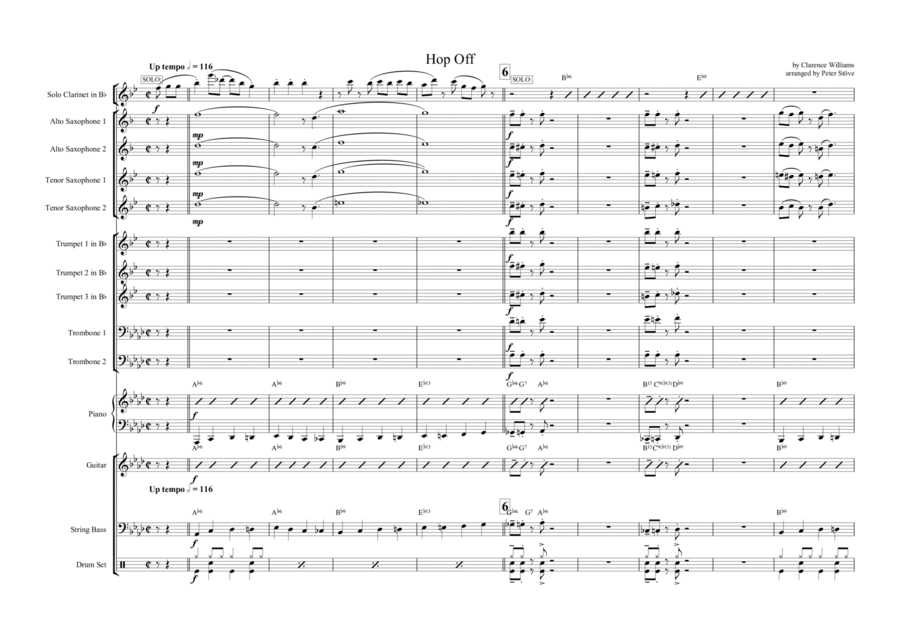Jazz Ensemble Jazz Ensemble - Level 5 - Digital Download SKU: A0.1130066 By Fletcher Henderson And His Orchestra. By Clarence Williams. Arranged by Peter Stöve. 20th Century,Jazz. Score and parts. 84 pages. Peter Stove #730446. Published by Peter Stove (A0.1130066). Peter Stöve ‘What If Benny Goodman…’ series, Vol. 3! (A take-off on events that could have happened with the Benny Goodman Orchestra’s book of arrangements if things in jazz history had taken another turn). As jazz history books like Gunther Schuller’s tell us, Benny Goodman’s rendition of Jelly Roll Morton’s ‘King Porter Stomp’ in the arrangement of Fletcher Henderson ‘ushered in the Swing Era’. That this tune already had a long and venerable career was obvious to every jazz lover: starting with Morton’s own recording from 1923, it was revived on a regular basis by Fletcher Henderson for his orchestras of the ‘twenties and ‘thirties. He then adapted the tune for the Benny Goodman Orchestra, which made it a hit in 1935. And from that moment on, the tune stayed popular: in 1975 it was recorded by the Gil Evans Orchestra for the album ‘There Comes A Time’. But during the ‘twenties, Henderson picked up more ‘jazz and stomp’-tunes (as opposed to the Tin Pan Alley/Broadway fare) and had them arranged for his orchestra. One such example is a tune credited to pianist/bandleader/businessman Clarence Williams (although other sources state that it was actually written by Joseph Joe Jordan, one of the early ragtime ‘professors’). That is the composition ‘Hop Off’, a very swinging, hard-driving multi-strain tune. Henderson recorded it in 1927. However, unlike ‘King Porter Stomp’, Henderson never chose to ‘adapt’ this tune for his ‘thirties swing-style orchestra, and so it never became a part of the Goodman Orchestra’s band book. What if Henderson had done so, and in 1935 had handed over the tune to Goodman as an addition for his ‘Let’s Dance’-library? ‘Hop Off’ is presented here as a piece that could have been a cornerstone of the Goodman band library. Based on the 1927 Henderson arrangement, it juxtaposes the two main strains of the original composition for maximum variety. Plenty of breaks, stoptime-sections and other ‘hot’ stuff. Scored for the line-up of the Benny Goodman Orchestra of 1935: solo clt/2 as/2 ts/3 tpt/2 trb/rhy. Tpt 1 to Eb3. Solo’s for clarinet, tenor sax 1, tpt 2, trb 1 and a brief four-bar spot for the drummer at the end. If your band is able to play ‘King Porter Stomp’, this tune should cause no problems. The only exception is the presence of a solo clt part. The clarinet soloist must be a first-class ‘BG-wannabe’: fluent soloist, comfortable in the upper register. Must be able to be heard over a shouting ensemble chorus. If your band has such a player: have fun!
